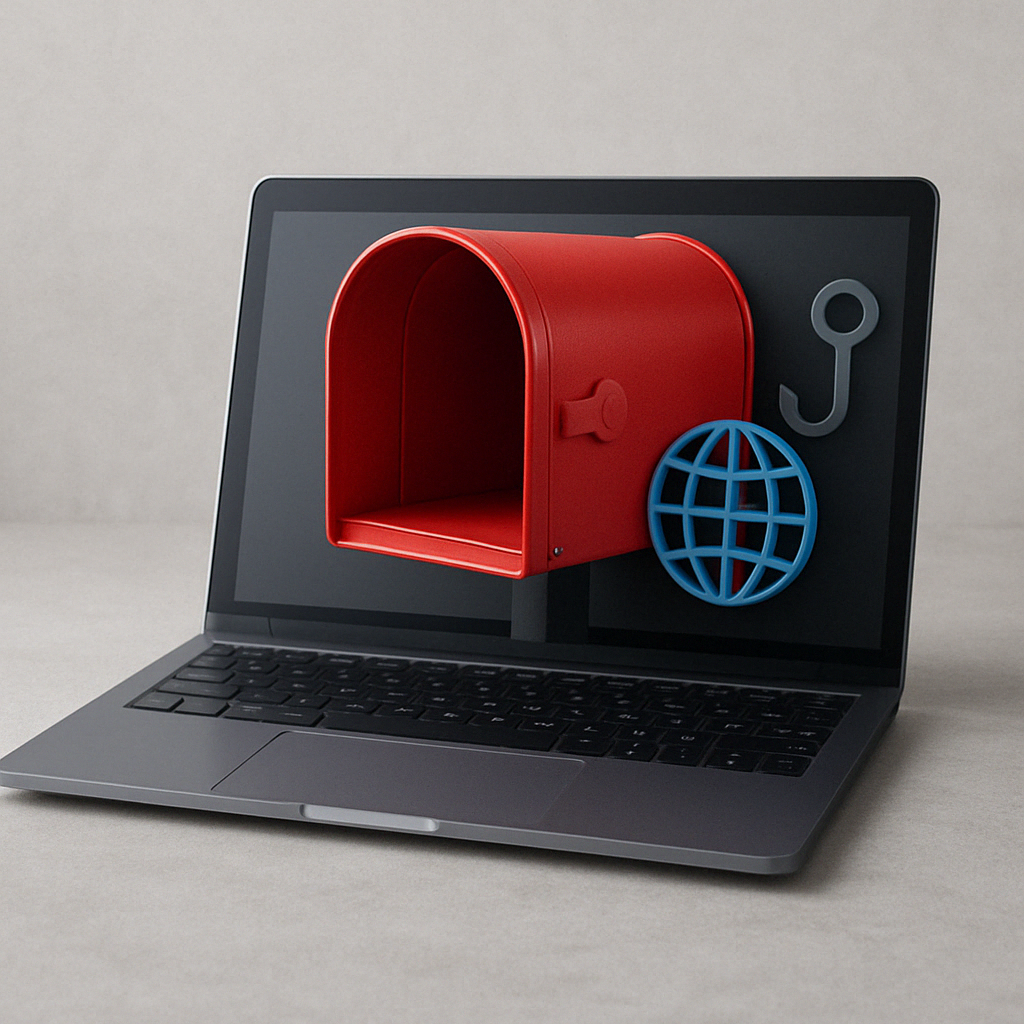Webhooks Are Like Email Addresses, But With More Risk (And Power)
Webhooks are like digital mailboxes—convenient, powerful, and easy to overlook until they start breaking. I explore what webhooks really are, why they're vulnerable, and how to secure them like a pro with IP whitelisting, encrypted hashes, and tools like HookDeck.

Why treating your webhook endpoints like your inbox could save your stack
Let’s start with the basics:
A webhook is essentially a unique internet address, a URL, that listens for specific information and reacts when something happens. You set it up so that when an event occurs (like a new order on Shopify), a system pings that address with relevant data. It’s like giving someone your number and saying, “Call me when this happens.”
You’ve likely used services like Zapier, Make, or Airtable automations that rely on this idea, "when X happens, send info to Y." Y is the webhook. Behind the scenes, that’s often an IP address managed by a third-party tool, acting as a “listener.”
📨 Webhooks = Digital Mailboxes
Think of a webhook like an email address:
- It’s a unique destination.
- Anyone with that address can send you something.
- If it gets in the wrong hands, you can receive spam, or worse.
And yes, that happens.
It’s happened to us at ShowCal, where we began noticing errors in our webhook logs. What we found were garbage payloads, data that made no sense, often sent from unknown sources.
The takeaway? Webhooks are powerful, but fragile. And the industry needs better spam filters.

📬 Why Webhooks Are Better Than Polling
Before webhooks, systems relied on polling:
Like walking up to someone’s door every 10 minutes to ask, “Anything new happen?” That wastes resources, both time and money.
Webhooks are the opposite:
It’s like that person texting you the second something changes. Cleaner. Smarter. Instant.
But… if you start getting random messages, or the wrong person has your number, you’ve got a problem.

🔐 How I Secure My Webhooks
Here’s how I’ve leveled up my webhook infrastructure, especially now that I’m managing production data for clients:
1. IP Whitelisting
Only accept data from trusted IPs.
If someone outside your list tries to hit your endpoint? Blocked.
2. Use a Middleman Like HookDeck
HookDeck lets me:
- Filter and route webhooks before they hit my main stack
- Rotate webhook URLs (like changing your phone number yearly)
- Set up retry logic and logs to debug issues
3. Don’t Send Full Payloads
Instead of sending all the order info, just send the order ID. Then, in your app, make a secure GET call using that ID to fetch the actual data.
Think of this like someone paging you “Order 1145” instead of reading the entire order aloud in public.
4. Add a Hash or Signature to Verify Authenticity
This is like stamping your envelope with a wax seal:
If the receiver knows the secret pattern, they know it came from you.
I’m experimenting with:
- Sending a hashed signature in the URL or payload
- Verifying that hash server-side before accepting the data
- Encrypting/decrypting payloads for added protection
This makes the webhook less of a blind trust situation and more of a verified handshake.

💡 A Personal Take
Early on, I thought webhook errors were just noise, annoying but ignorable.
Now, with clients relying on our system, every failed webhook is a missed signal… or worse, a breach.
The shift? I started treating my webhooks like real addresses, guarded, monitored, and rotatable.
It’s a small detail, but in automation, the small details are the system.
🧠 TL;DR:
- Webhooks are a smarter, event-driven alternative to polling.
- But they’re just open URLs, protect them like your email or phone number.
- Use IP whitelisting, signature hashes, and middleware like HookDeck to safeguard your stack.
- Don’t just send data, send signals. Then verify, retrieve, and respond.
What do you think?
Have you ever had a webhook go rogue on you?
Do you treat your webhooks like trusted infrastructure, or just throw them together and hope for the best?
👇 Drop a comment or message me. I’d love to hear how others are thinking about this.
Want help implementing secure webhook flows in your stack?
I do this stuff for startups, media teams, and enterprise clients all the time.
→ Let’s talk